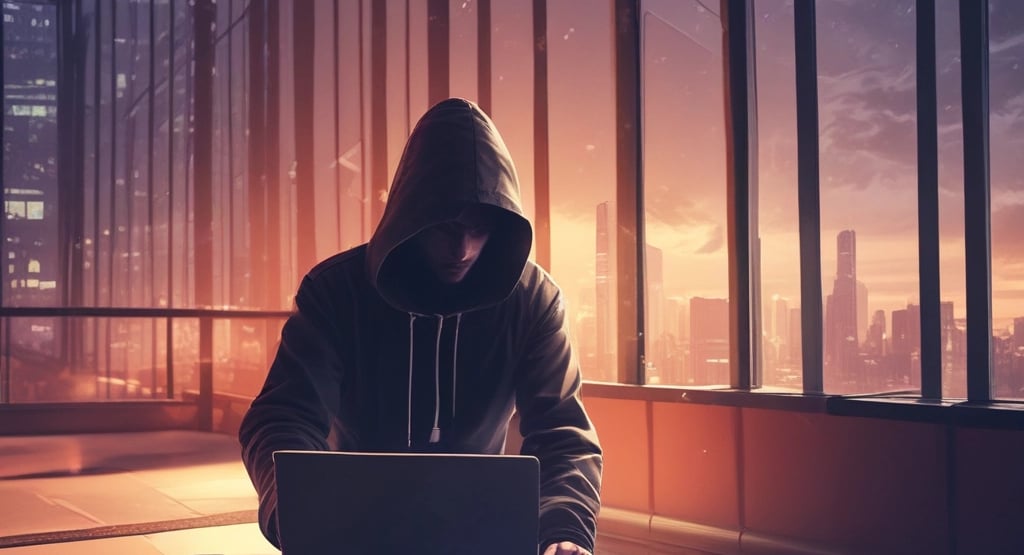Laptop Security
Read this high level overview on the steps you should take to maximize privacy and security of your laptop. Future blog posts may dive deeper into the details of this subject. .This post covers everything you should be aware of before purchasing and setting up your laptop as well as maintaining security while using it


🛡️ Securing a New Laptop Like a Ghost
How to Set Up a Clean Machine for Maximum Privacy, Anonymity, and Control
In an age where your laptop is more than a tool — it’s a tracking device — how you acquire and configure it can mean the difference between quiet control and constant exposure.
Whether you're a freelancer, a researcher, or a digital shadow-in-training, this guide will walk you through the exact steps to secure a new or used laptop from the moment of purchase to full operational hardening.
🧾 Step 1: Buy It Clean
Even the way you buy your laptop leaves a trail. Here’s how to avoid that:
🔹 New Laptops
Pros: Warranty, latest hardware, known performance
Cons: Easily tied to your identity through credit card, online orders, shipping info
🔹 Used Laptops
Pros: Easier to buy anonymously (cash or local deals), no direct link to you
Cons: Unknown history, no warranty — always inspect thoroughly
Best Practice:
Pay with cash at a physical retailer or secondhand seller
If online, use gift cards or prepaid debit cards bought in cash
Avoid big-name stores that require IDs or account logins (Amazon, Best Buy, etc.)
⚙️ Step 2: Initial Setup – Go Dark
Before you even connect to the internet:
🔹 1. Boot Offline
Don’t connect to home Wi-Fi. Use public Wi-Fi (library, café) or create a temporary mobile hotspot
Never log in to personal accounts during first setup
🔹 2. Create a Dummy User Profile
No real names, no identifying info
Disable telemetry or “usage improvement” features during setup
🔹 3. Disable Location Services
Go into your OS settings and turn off all forms of location tracking
🧠 Step 3: Choose Your OS Wisely
Each operating system comes with tradeoffs. Here's how they stack up:
💻 Windows (Least Private by Default)
Microsoft collects significant telemetry
Can be hardened, but requires effort
Consider switching to Linux, or use tools like O&O ShutUp10++ to reduce tracking
🍎 macOS (Moderately Private, Walled Garden)
More secure than Windows out of the box
Tied to Apple ID unless set up carefully
Harder to customize or anonymize deeply
T2/Apple Silicon chips make OS replacement very difficult
🐧 Linux (Maximum Control & Privacy Potential)
Best for advanced users who want full transparency
Use privacy-focused distros like:
🧊 Qubes OS (Compartmentalized VMs, extremely secure)
🧪 Tails OS (Runs live, leaves no trace)
🧬 Linux Mint or Ubuntu + Hardening (Good balance of usability and privacy)
Recommendation:
For extreme privacy, consider a second laptop that runs Linux or Tails exclusively for sensitive activities.
🔐 Step 4: Lock It Down
Once the system is running:
🔸 Full-Disk Encryption
Windows: Use BitLocker (Pro edition)
macOS: Use FileVault
Linux: Enable LUKS during install or use Veracrypt
🔸 Firewall
Enable the built-in firewall and block all non-essential inbound/outbound traffic
For Linux, use UFW (Uncomplicated Firewall)
🔸 Antivirus / Anti-Malware
macOS and Linux are less prone, but not immune
Use Malwarebytes or ClamAV if needed
Avoid bloated AV software that phones home
🌐 Step 5: Harden Your Online Activity
🔹 VPN (Virtual Private Network)
Choose a no-logs provider based in a privacy-friendly jurisdiction (e.g., Mullvad, IVPN, ProtonVPN)
Don’t use free VPNs — they’re often honeypots
🔹 Browser + Extensions
Use Brave or Firefox with:
uBlock Origin
Privacy Badger
HTTPS Everywhere (Firefox only, now legacy — Brave has this built-in)
NoScript (advanced users)
🔹 Private Search Engines
Use Startpage (proxy + Google results) or DuckDuckGo
Avoid Google and Bing entirely
📩 Step 6: Secure Communication Channels
Use Signal for encrypted messaging
Use ProtonMail, Tutanota, or Skiff Mail for email
Avoid Gmail, Yahoo, and Outlook for sensitive communications
Bonus:
Use SimpleLogin or Addy.io to create alias email addresses for each service you sign up for — helps track leaks.
🧱 Step 7: Physical Security
🔐 Strong Device Access
Use a strong boot/login password
Disable biometric logins (FaceID, fingerprint) — they can be used against you
Enable screen auto-lock and require password immediately
🧳 Secure Storage
Store your laptop in a locked, hidden place when not in use
Consider a Faraday sleeve or bag if you suspect physical surveillance or want to block wireless signals
🔄 Step 8: Maintain Your Security
Regularly update your OS and apps (disable auto-updates that phone home)
Review firewall and connection logs
Use Tor Browser when researching sensitive topics or accessing .onion sites
Monitor for suspicious activity (device heat when idle, strange processes, unexpected network traffic)
🔥 Final Contingency
If you're compromised or suspect tampering:
Backup secure files offline
Wipe the drive using DBAN (for HDDs) or built-in secure erase tools (for SSDs)
Reinstall from a verified ISO
Rotate your VPN, email aliases, and threat model
🎯 Final Word
Your laptop is your command center. In the wrong hands, it becomes a liability — not an asset.
Don’t treat privacy as optional. Treat it as standard operating procedure. From purchase to setup to everyday use, your digital presence should be calculated, compartmentalized, and controlled.
You don’t have to be a hacker to be private. But if you operate like one, you’re harder to find.